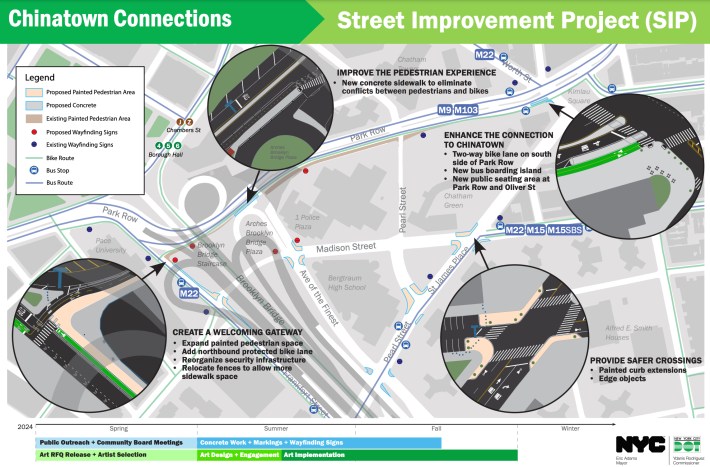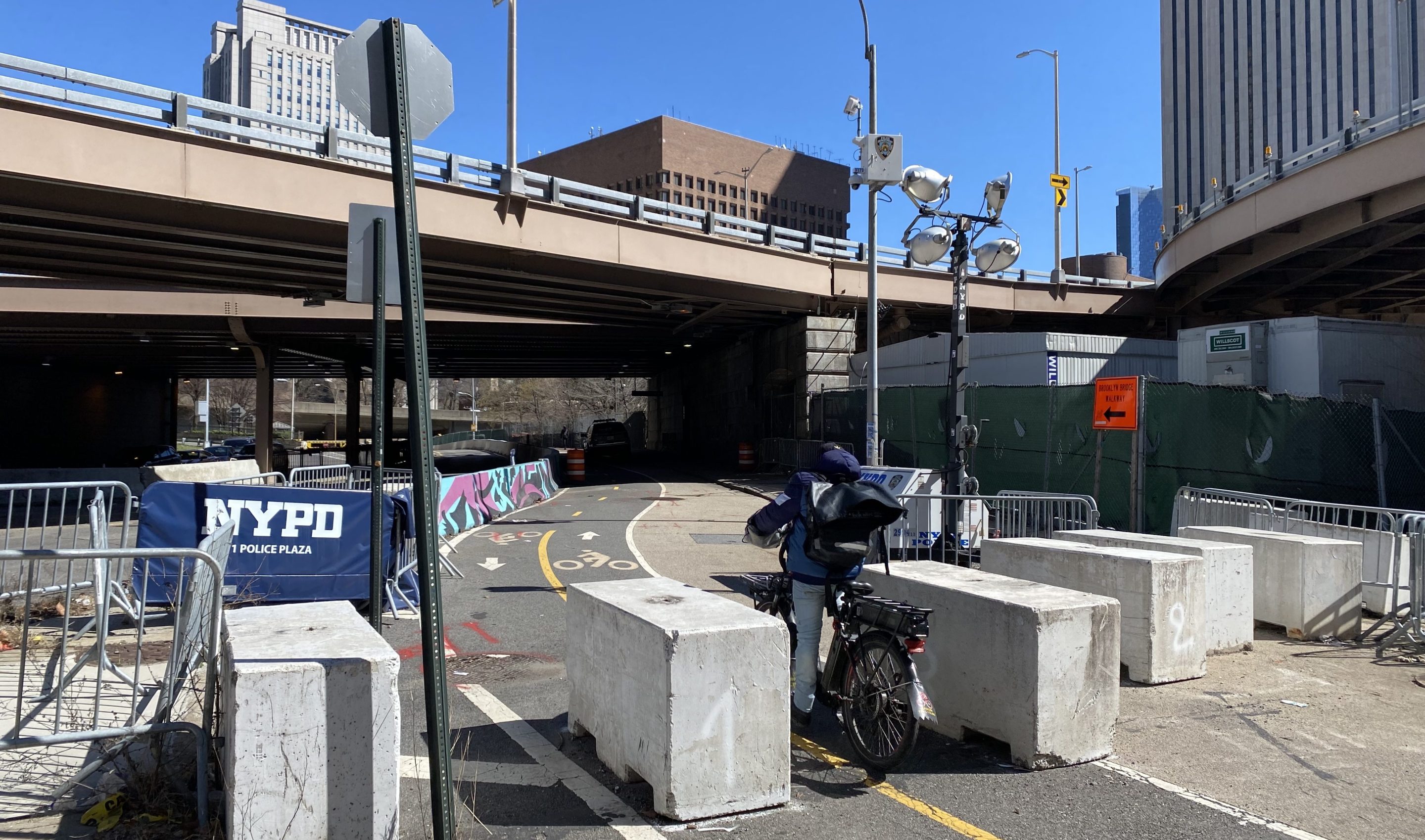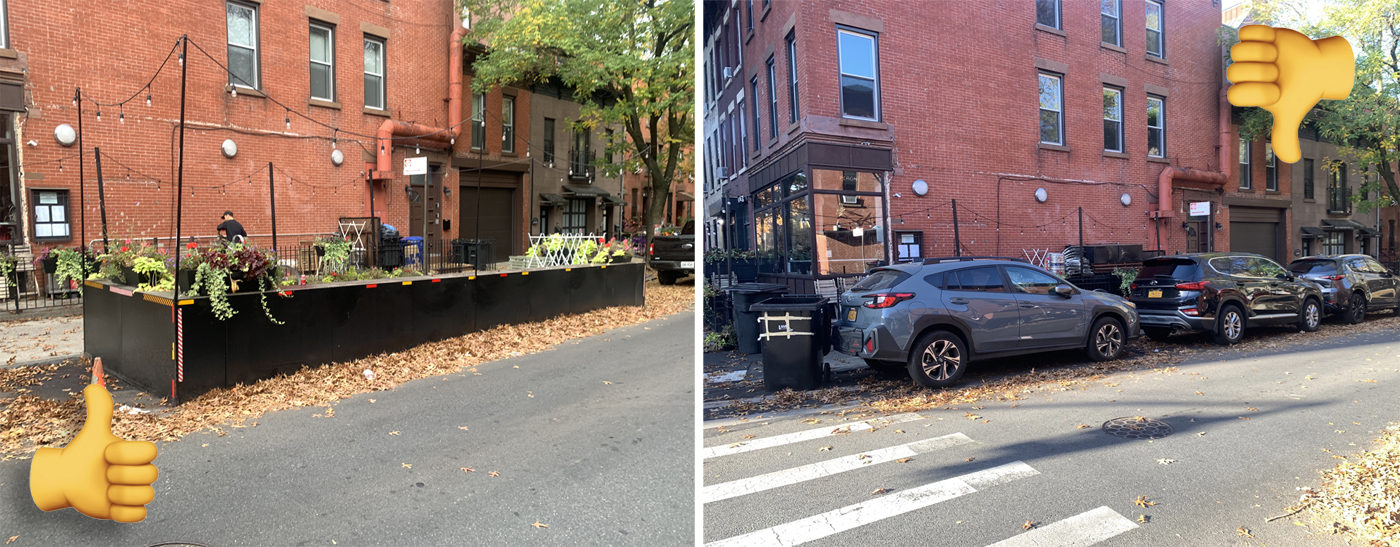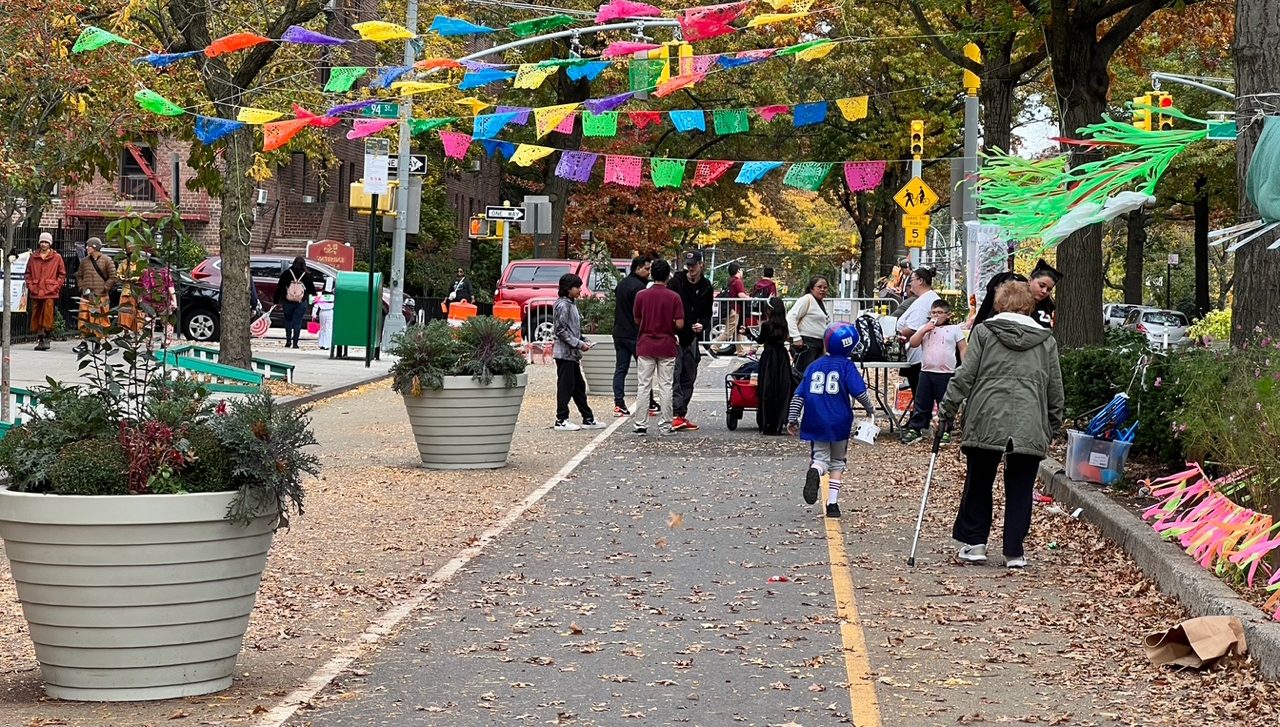The city plans to add some minor upgrades to Park Row and some surrounding streets to make the heavily policed area more appealing to residents and visitors to walk or bike.
The Lower Manhattan corridor near NYPD headquarters will have less police clutter and better spaces for cyclists and pedestrians, according to the Department of Transportation — and residents welcomed the changes as a first step toward a larger redesign.
"The DOT's Street Improvement Program is the first, small step in achieving the broader vision of transforming Park Row into a welcoming and safe gateway reconnecting Chinatown, the Brooklyn Bridge, and Lower Manhattan," Nick Stabile, co-founder of the Park Row Alliance, a civic group, said in a statement. "We need far more funds to build a Park Row that delivers the significant social, culture, and economic benefits that our communities need."
DOT plans to make the changes this summer, ahead of a larger nearly $56-million overhaul of Park Row that includes unmaking Kimlau Square and then rebuilding it on the other side of the street. The city is eyeing reopening Park Row to cars for the first time since police, citing security, closed it to regular traffic after 9/11.
The Adams administration almost reopened the road on nights and weekends last year at the behest of the Council Member Chris Marte without public discussion, but Hizzoner reversed course after pushback by other local elected officials and residents, and DOT plans to do a traffic study over the summer before deciding whether to let drivers back onto the street for the first time in more than two decades.
The agency’s shorter-term changes include making the southern end of Park Row near the Brooklyn Bridge at Frankfort Street into a more “welcoming gateway,” according to slides from an April workshop by the Transportation agency [PDF].

That means more painted pedestrian space, clearer signage, better organized police security infrastructure, and a new northbound bike lane on Frankfort, giving cyclists protected access to Park Row from both directions.
Thanks to a mess of police barricades and booths, the entrance doesn’t currently look like civilians are allowed in.
“If they can do this now and put some decent signs up and lighting, great,” said Lucy West, a longtime resident of the adjacent Chatham Green complex. “Try to keep it less ugly, get as much garbage out of there as possible.”
The city says it will also build out a concrete sidewalk on a part of the street and add a concrete bus boarding island near Worth Street. There will also be a new public seating area at the busy corner of Park Row and Oliver Street.
The city should get rid of a pinch point by the Brooklyn Bridge staircase, where the section for pedestrians and two-way bike traffic narrows down to three feet, Stabile said. The DOT could do so by using space from the one of the adjacent off ramps from the span which has been closed to the public and where police officers park their cars.
DOT plans to narrow pedestrian crossings with painted curb extensions at two nearby intersections of Madison Street, at the Avenue of the Finest and St. James Place, but West worried that police would park in any new painted areas, as they already leave their vehicles illegally all over the area.
"They park wherever they want. They parked on our sidewalks for years," West said.
The agency also put out a call to artists recently to paint some of the concrete barriers to beautify the area.
The entire Civic Center area around One Police Plaza and federal and state courthouses nearby has become littered with security infrastructure since the 2001 terror attacks, and various law enforcement agencies use the restricted public street as a place to store their vehicles and equipment, to the dismay of residents.
The city plans to put out a request for proposals for planning and design of the larger overhaul of the area, which includes moving Kimlau Square to the other side of the Bowery, which officials say will straighten the confusing six-way intersection. Construction on that larger project won't start until 2027.
The plans echo a similar proposal dating back to the Bloomberg administration.






